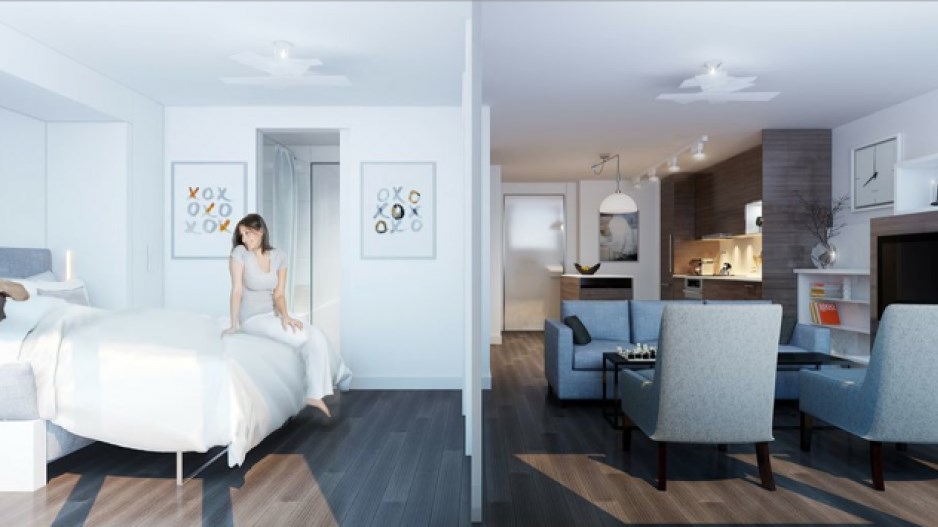Bosa Properties unveiled in Surrey November 13 what it bills as being the world's first transformable homes built in a large-scale condominum development.
The homes are called "transformable" because every square foot of space is designed to be as efficient as possible and the space can easily be transformed from one use to another.
The project borrows from the trend common in small developments where tiny living spaces are made to feel much larger thanks to foldable furniture, Murphy beds and other innovations.
The difference is that Bosa is using these techniques in normal-sized, one-bedroom suites, which range in size between 500 and 700 square feet.
Bosa is also building these suites in a 320-unit building called the Alumni – the first of eight buildings that it plans to build in part of Surrey's Central City district that is dubbed the University District.
Most of these buildings are likely to use these space-saving techniques, which the developer calls "BosaSPACE."
Bosa owns more land in Central City and eventually plans to build a total of 15 buildings in the area, senior vice-president Darryl Simpson told Business in Vancouver.
The larger size of the units and the larger building makes the project unlike recent Vancouver projects such as 18 West Hastings, where Reliance Properties Ltd. and ITC Construction Group were given approval to push minimum square footage limits in the building code and zoning bylaws.
"If you go on YouTube and search 'transformable condo,' you'd find a number of individual home owners and aspiring designers who have taken it upon themselves to hire a mill worker and make a 320-square-foot apartment in Hong Kong with a bathtub that drops out of the ceiling," Simpson said.
"That's very cool stuff but it's not commercially viable. What we've been doing in the last year-and-a-half is to find a way to make these concepts viable."




